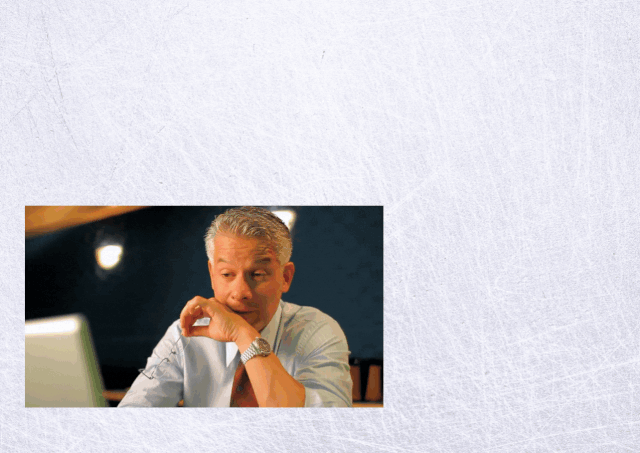New Research on Managing Stress Together in the Workplace
When it comes to workplace well-being and stress, mindfulness can go beyond the individual level. Research suggests that strengthening clear, vulnerable communication and working from the knowledge that we’re in this together can help transform the way we work....

First-generation mindfulness interventions, for the most part based on MBSR (Mindfulness-Based Stress Reduction), are designed to improve personal well-being and help individuals feel grounded, even in chaotic circumstances. But it’s “quite medieval,” says Dr. Jutta Tobias Mortlock, to imagine that a personal meditation practice is all that’s required to help individuals work better together.
We now know, says Mortlock, that spending a lot of time in solitary contemplative practice “is not necessarily a guarantee that one learns something, especially as it pertains to understanding what helps me relate to you.” We can’t always access the insights we need through our solo practice.
The interpersonal dimension of workplaces is “a huge and under-studied stressor,” says Mortlock. “The absence of interpersonal conflict makes everything else doable.” It’s the potential of mindful communication in group settings to help people forecast and manage conflict that Mortlock seeks to draw out through team mindfulness.
Smoothing daily interactions and resolving conflicts before they start may sound like pie in the sky to some leaders. However, according to Mortlock, mindfulness can help us do just that—although the tools needed to get there may look a little different from the mindfulness we’re used to.
“It’s nice if I can help people change their relationship with themselves,” says the senior lecturer in organizational psychology at the City University of London, UK. “But that feels toothless when there’s something fundamentally wrong with the way your organization works.”
The focus of Mortlock’s research is to generate sustainable well-being and performance for people together at work. She has introduced over 11,500 adult learners, including many mindfulness skeptics, to mindfulness, and is dedicated to investigating and embedding innovative mindfulness interventions into organizations. Now, through collaboration with active military staff in the United Kingdom’s Armed Forces, her research is helping to develop transformative mindfulness training strategies for high-stress work environments.
From Me to We
Individualistic attitudes can be a barrier to understanding and cooperation, not only in the mindfulness community but in workplaces and society in general. While Jon Kabat-Zinn delineated meditation as just one of many ways to become mindful, over the past 40 years meditation has become the tool to independently manage one’s well-being.
“But our world is not independent,” points out Mortlock, whose interest is rooted in management science. “Especially in workplaces—our actions are not independent, they’re interdependent.”
Individualistic attitudes can be a barrier to understanding and cooperation, not only in the mindfulness community but in workplaces and society in general.
Mindfulness is in the space between people. “In workplaces, or anywhere you have relationships with people, both the source of stress and the source of relief is quite often in the people,” she says. “The task or the job at hand is not the problem.” When people reframe how they relate to stress, so that they become more interdependent, she notes, “they come to understand they’re not alone, which changes how they feel in response to their stress.”
“There’s wonderful literature on mindfulness in the space between people that we haven’t yet translated into mindfulness interventions,” says Mortlock. “MBSR is brilliant, but my argument is that it was designed to help patients with chronic pain.” Most workplace problems are about our relationships with each other.
No “I” In Team
Mortlock suggests mindfulness meditation and training be supplemented by training people to be caring and considerate, and to have one another’s backs. The curriculum she’s developing, Team Mindfulness Training (TMT), teaches that planning for and responding to stressful circumstances is the responsibility of the collective.
Management science literature is based on the understanding that when members of a group or community perceive their interdependence with one another, much like a flock of birds flying in unison, good things happen. For people in organizations, this means bringing mindful awareness into our communication strategies in very intentional ways. “Recent studies have shown that when teams have this shared team mindfulness, then conflict happens more skillfully and people don’t undermine each other,” Mortlock explains.
Mortlock describes stress management as a social action. The simple act of caring about somebody else lowers a person’s stress. “It calms me down to listen to you. Humans are designed that way. We can use the fact that you and I having a conversation, where we’re actively listening to each other, calms my body down. This is good for us, so let’s do more with this.”
Managing Stress Together
Two pilot studies, led by Mortlock and published in Frontiers in Psychology in June 2022, brought together high-stress personnel from the UK’s Ministry of Defense to understand whether Team Mindfulness Training can support individual and collective stress management skills. These studies offer insights into how leaders could start incorporating mindfulness into their organizational systems.
The most important component of the study involved inviting participants to share upcoming work challenges with other group members. In this way, military personnel got to know each other as real people, not just as a person in uniform. “A bit of compassion starts to happen,” Mortlock says. “This is all part of anticipating stress, but anticipating it together.”
“Through this training, we’re helping people talk about stress, make it less taboo, share strategies, and learn how to see that they’re not alone.”
Dr. Jutta Tobias MortlockThe second part of the training dealt with responding to stress. Mortlock says people tend to be quite hierarchical when dealing with challenges, which can limit communication within the group. TMT trained individuals to talk with each other to solve problems among themselves, instead of hiding conflict, or telling a superior.
“People need to talk about difficulties and challenges together,” says Mortlock. “Mindful organizational management always has these two parts: first, anticipating challenges, and then asking, how do we respond? How do we pool our resources?”
While it’s called Team Mindfulness Training, Mortlock stresses that individuals needn’t necessarily belong to the same team or workplace department. In fact, it’s sometimes better to start working in small groups that allow people to extend their social networks and become more cross-organizationally connected. “Through this training, we’re helping people talk about stress, make it less taboo, share strategies, and learn how to see that they’re not alone,” she says. Mortlock plans to make her TMT curriculum available online and open for feedback. “I want us to see more of how we can combine different types of mindfulness practices to get not only techniques that help me,” she says, “but techniques that help us.”
5 Ways to Navigate Workplace Stress as a Team
By anticipating when a stressful event is on the horizon, and preparing to respond together, workers can reduce individual stress and burnout while transforming how they relate to workplace challenges.
Read More
Grocery Store Employees Need Mindfulness, Too
Skills like meditation, kindness, and gratitude can improve mental health and morale at work—including for retail workers. Anthony Sartori shares his experience of both the joyful and challenging moments while unrolling a mindfulness program at a grocery store.
Read More
How to Hold Boundaries with Skill and Care
Setting and holding boundaries can be challenging, even if you’re not a people-pleaser. The key is communicating clearly to cut down on conflict and increase freedom—for those on both sides of the line.
Read More

 Tfoso
Tfoso 





























